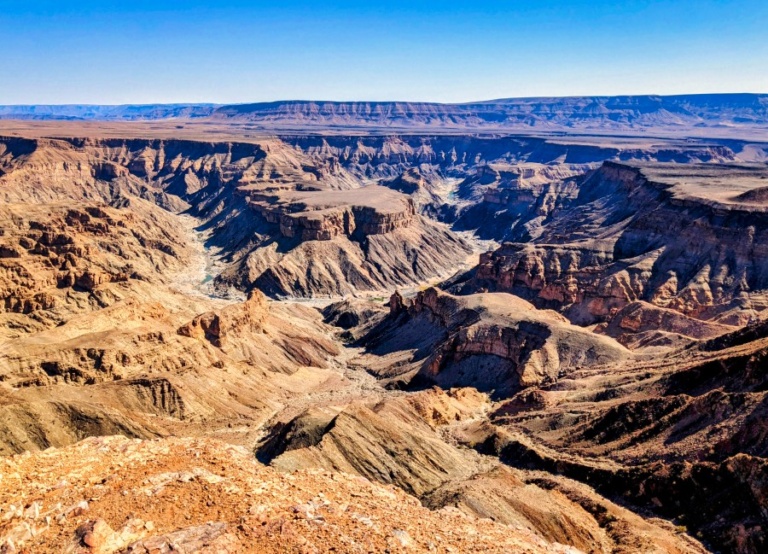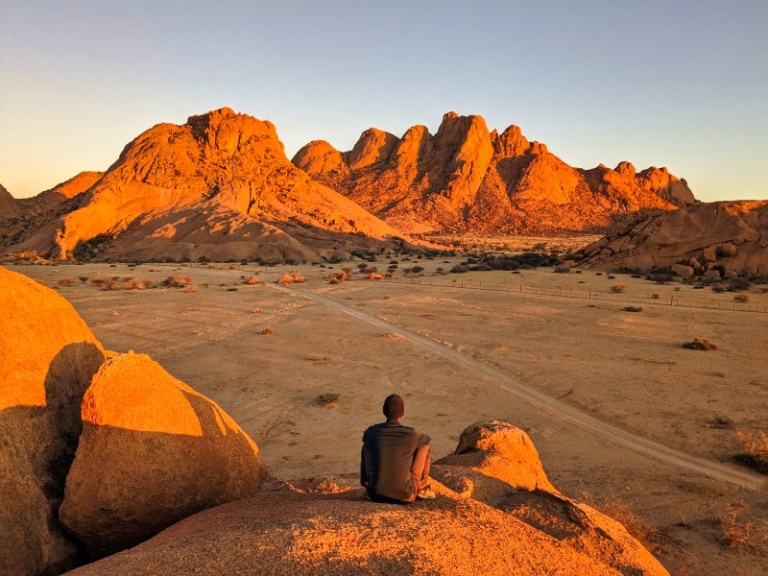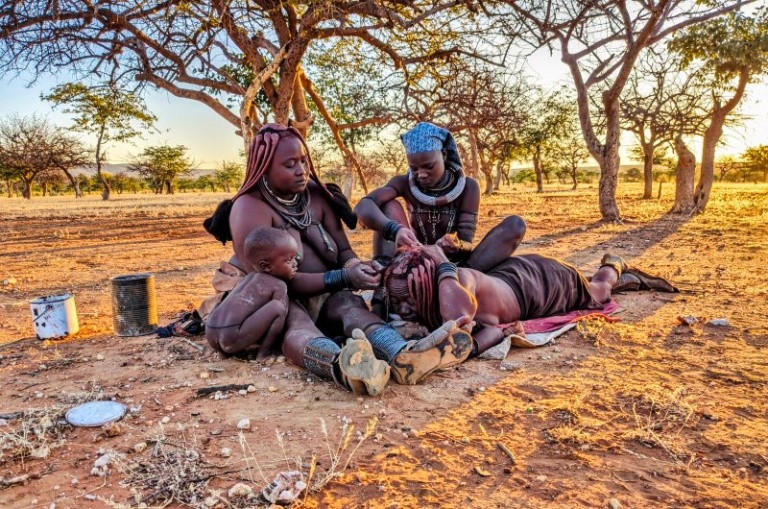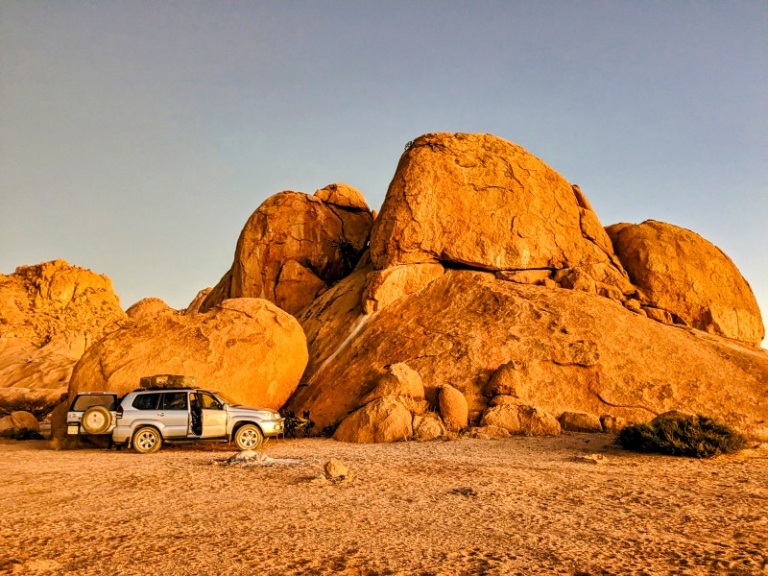The Caprivi Strip: The Ultimate 2024 Travel Guide
The Caprivi Strip, otherwise known as the Zambezi Region, is an awesome part of Namibia. With three iconic African rivers running through it and lots of annual rainfall, it’s completely different from the rest of this dry, desert country.
It’s also pretty off the beaten track. We highly recommend it for adventurous travellers seeking something a bit different.
Keen to explore the Caprivi for yourself? Great! Read on for our complete guide to the Caprivi Strip, Namibia.
Namibia Travel Resources
- Getting there: search for flights to Namibia
- Guidebook: pick up a copy of Bradt’s Namibia
- How to get around: rent a car or 4WD
- Travel insurance: get travel insurance for your trip
- Money: get a Wise travel card to save big time in Namibia
- Tours: explore the best tours in Namibia
The Caprivi Strip: Overview

The Caprivi Strip is exactly what it sounds like: a 400 km long, ultra-narrow strip of land in northeast Namibia. It runs from the ‘main’ part of Namibia to the Zambezi River in the east.
And when we say narrow, we mean narrow. For most of the Caprivi Strip, it’s only 32 km wide.
The Caprivi Strip is largely surrounded by Angola to the north and Zambia to the northeast, with Botswana’s Okavango Region to the southeast.
Where to next? Read about how to visit Spitkzoppe
The Caprivi Strip is all about the rivers. Three of Africa’s greatest rivers, the Zambezi, Chobe and Okavango Rivers all flow through the strip.
Note: the Okavango River is called the Kavango River in Namibia.
Combined with the large rainfall the region receives, the Caprivi is a wet area, making it a haven for animals, especially birds and elephants.
For so much of Namibia’s history, the Caprivi Strip was off-limits to travellers due to the long war that raged in the region.
Now peaceful, it’s still relatively off the beaten track, raw and adventurous.
Want another adventurous destination in Namibia? Check out Kaokoland
Where is the Caprivi Strip
The Caprivi Strip is in the far northeast of Namibia, above Botswana and below both Angola and Zambia.
The eastern end of the Caprivi Strip is the world’s only quadripoint – where four countries meet. In this case, it’s Namibia, Botswana, Zambia and Zimbabwe.
The main city in the Caprivi Strip is Katima Mulilo in the far east.
Caprivi Strip Orientation
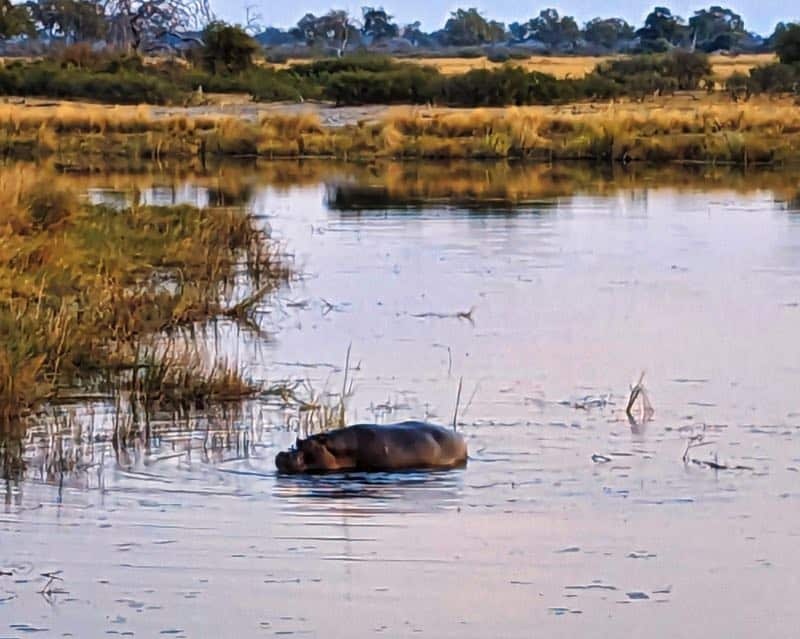
The Caprivi Strip runs for around 400 km from west to east.
The B8 is the main artery that runs through the Caprivi Strip. It is paved the whole way and in good condition.
Divundu is one of the first villages, and ‘areas’ you hit upon entering from the west. This part of the Caprivi Strip centres on the Kavango River (or, as it’s known in Botswana, the Okavango River).
This is an incredible part of the Caprivi Strip, with the wide open river of the Kavango providing a serene and peaceful landscape. Expect to see (and hear) lots of hippos in the river.
Driving east, the next village of any size is Kongola. Here, the road forks: the B8 continues east, while the smaller C49 heads south, to later meet up with the B8 near Katima Mulilo.
While the B8 between Kongola and Katima Mulilo isn’t that exciting, the stretch of the C49 that goes south has some great camping and parks along the Kwando River. This part of the Caprivi Strip is definitely worth exploring.
How to Get to the Caprivi Strip
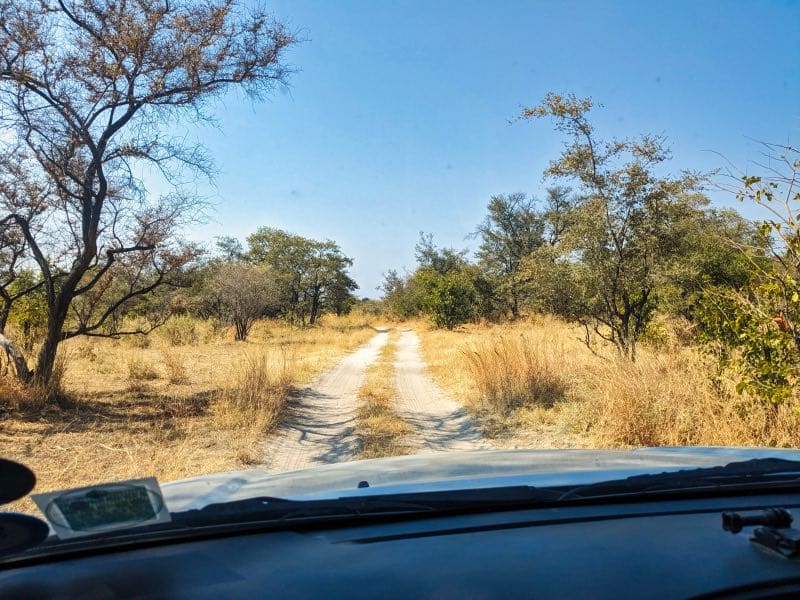
Namibia doesn’t do the public transportation game well, so the only way to get to, and then travel around the Caprivi Strip is by your own car.
If you don’t have your own car, then it’s best to rent a car to get around Namibia.
If you’re renting a car, it really pays to get one with the whole camping set-up. Camping in Namibia is an excellent (and cost-effective) way to explore this amazing country.
Fortunately, Namibia excels in the rental car + camping set-up, so you’re bound to find something that will suit your needs.
Pro tip: use Discover Cars to find the best deals on rentals for your Namibian adventure. It’s what we personally use and recommend.
Best Time To Visit the Caprivi Strip
Hands down, the best time to visit the Caprivi Strip is from May to October. This is during Namibia’s dry season. During this time, the weather will be fantastic, the roads will be dried out and most places will be open and accessible.
If you visit outside this time, flooding is a real concern. Tracks may be washed out and the parks can be up to 80% flooded, making them largely inaccessible.
Travelling during the rainy season is only for the experienced and self-sufficient adventurer.
Where to Stay in the Caprivi Strip
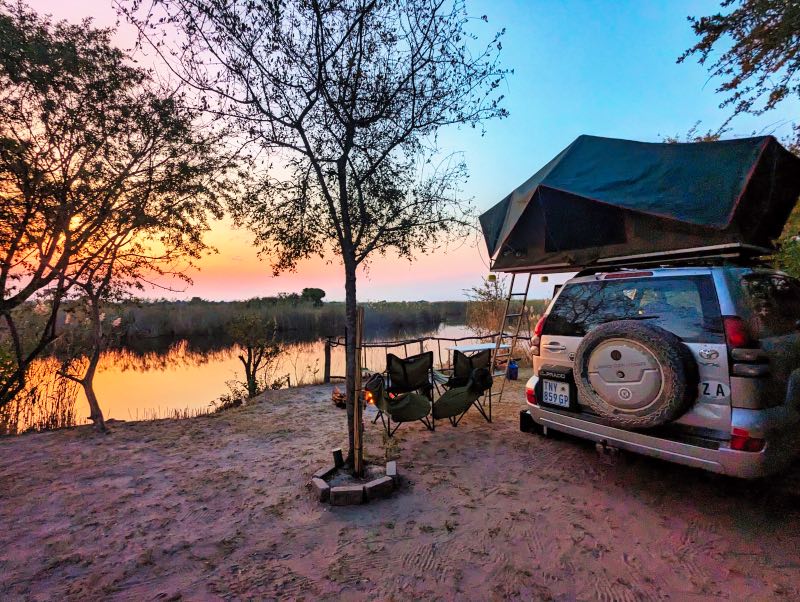
There are tons of great places to stay in the Caprivi Strip. From community-run campsites to upscale lodges, there’s no shortage of places to call home for the night.
Divundu Area
Kongola Area
Kapako Waterfront Camp
Gondwana Namushasha River Lodge
Katima Mulilo Area
Caprivi Mutoya Lodge and Campsite
Caprivi Houseboat Safari Lodge
Read more about our favourite campsites in Namibia
National Parks in the Caprivi Strip
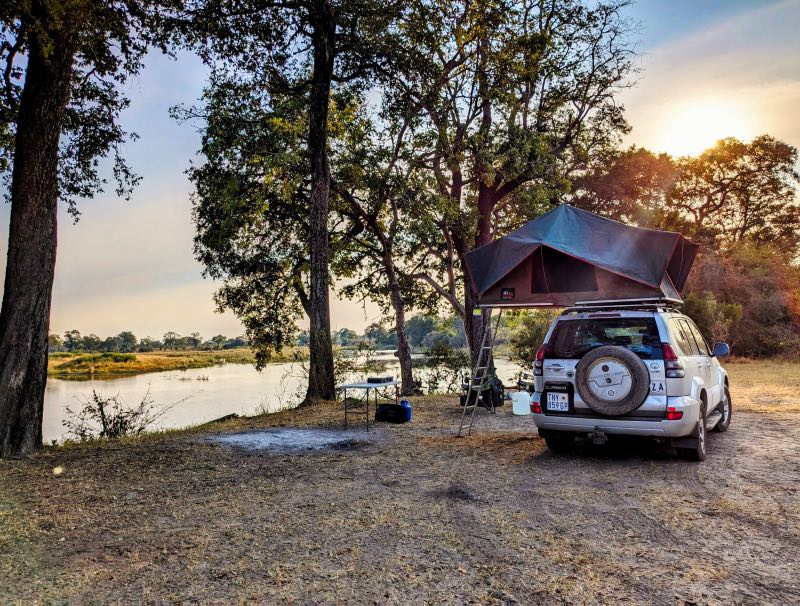
There are four national parks in the Caprivi Strip:
Khaudum National Park is really remote, isolated and largely inaccessible, so we don’t touch on that here. If you go, mad respect! (But please be safe).
All the national parks in the Caprivi charge the following:
- Foreigner: 100 NAD
- SADC: 70 NAD
- Car: 50 NAD
Places to Visit in the Caprivi Strip
There a number of places to visit and things to do in the Caprivi Strip. It’s a great area to take your time and enjoy the slow pace of life along one of its great rivers.
Popa Falls
Popa Falls are a series of cascading rapids in the Kavango River near Divundu.
Honestly, unless you’re staying at the Popa Falls Resort, we don’t recommend making the effort for Popa Falls.
Firstly, Popa Falls are very small, more a series of rapids than a real waterfall. If you’re thinking of the magic of Epupa Falls in Kaokoland, it’s not that.
Secondly, the resort has been built up to entirely surround Popa Falls and you’re not allowed to walk around on your own.
It’s not really enjoying nature to its finest. And there are way more wild and epic places in the Caprivi to explore.
That said, should you still want to visit Popa Falls, it’s 50 NAD per person + extra for a car.
Buffalo Park (aka Buffalo Core Area)
Buffalo Park is officially called the Buffalo Core Area and is one of two parts of the Bwabwata National Park (the other is the Mahango Core Area, which we discuss below).
Buffalo Park is located on the eastern side of the Kavango River, across from its sister park, Mahango Core Area.
Approximately 10 km after Divundu you will find Buffalo Park on the right.
Buffalo Park is small (629 km²), but well worth a visit. It’s not that well known, so really quiet, and has some good wildlife.
In addition to elephants and (obviously) buffaloes, there are very large herds of roan and sable which are rarely seen elsewhere in Namibia. These big antelope are what make Buffalo Park so special.
You’ll also find the Caprivi Strip regulars: warthogs, zebras and giraffes. There are also some predators such as lions, cheetahs and leopards, but as always, these are very rarely seen.
Buffalo Park is easy to self-drive, but a 4×4 is recommended due to sandy roads. The best drive is along the riverfront road, as this is where most animals are spotted and the scenery is lovely.
You can visit Buffalo Park as a day trip as you only need 3-4 hours to explore the park.
Mahango Core Area
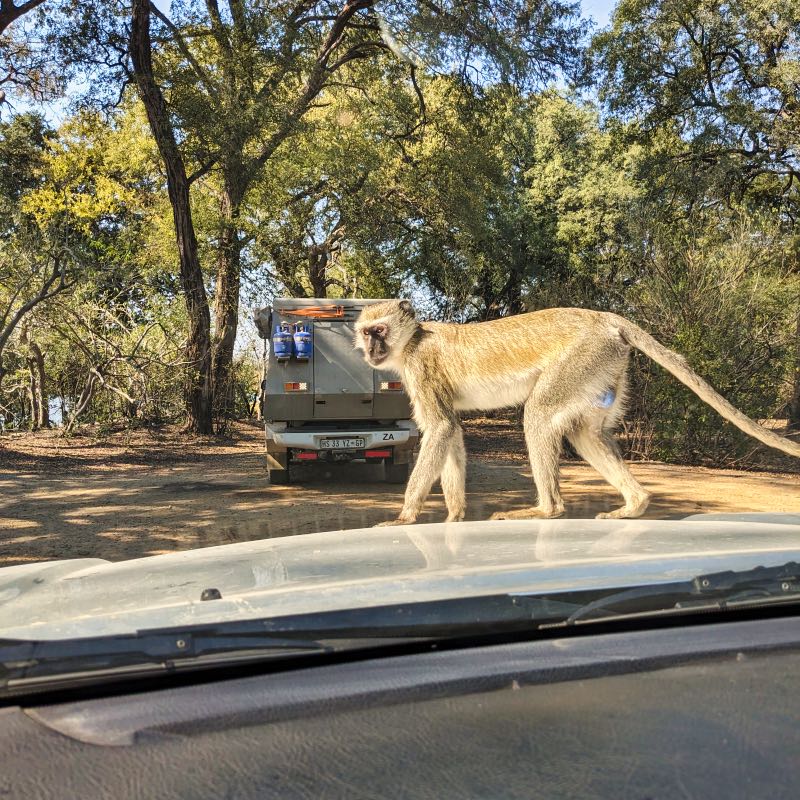
The Mahango Core Area, frequently referred to as the Mahango Game Park, is on the western side of the Kavango River (on the other side of the river from Buffalo Park).
At 245 km², the Mahango Core Area is super tiny. There are two main areas to the park: the bushland, located west of the C48 and the riverfront road, located east of the C48 next to the Kavango River.
Pro tip: there is a ‘waterhole’ in the park, but our two cents are not to bother with it. It’s a long drive and not worth it. The riverfront road is much better.
There are a few spots in Mahango where you can leave your car which are noted on the map you get at the gate (mostly picnic areas). You can try to have a picnic at Mahango, but beware of the very, very tricky monkeys!
Whilst there are a variety of animals in the park, expect to see mainly water buffalo, antelopes, warthogs, zebras, and giraffes.
Mahango is filled with beautiful large baobabs.
Like Buffalo Park, you only need 3-4 hours to fully explore the park.
Mashi Craft
If you like to buy African crafts, then you’ll love Mashi Craft. Located near the village of Kongola, Mashi Craft sells local crafts from the region.
It’s managed by the local women, with 60% of the profit going to the community and the remaining 40% to the shop. Every item has a sticker on it identifying the name and the village of the artist.
What a great place to buy souvenirs!
Kapako Traditional Village
With the rise in popularity of Himba community visits in Namibia, other communities are following suit.
The Kapako Traditional Village is a newly set up social enterprise to assist visitors to learn about the local Hambukushu people.
Entrance (150 NAD pp) includes a small village tour that finishes with a song and dance. It doesn’t feel contrived and is a great way to both learn about local culture and support a community project.
To visit, you can stop by, contact Harsen (+264 356 7066) in advance, or, if you’re staying at Kapako Waterfront Camp (see above), speak to Lucas about arranging a visit.
Related: How to Visit a Himba Tribe Ethically and Responsibly
Mudumu National Park

Mudumu National Park is awesome! It’s super wild and matched our dreams of what camping in Africa would be like.
Even though we got our Prado stuck in thick sand for hours and were almost trampled by elephants (seriously), we still loved it.
Located around 35 kilometres south of Kongola on the C49, Mudumu is directly on the Kwando River (the western border with Botswana).
Mudumu National Park is the least-known of all the parks in the Caprivi Strip (and thus probably all of Namibia), so it doesn’t see many visitors (maybe 2-3/day). This means it’s incredibly serene and you’ll largely have it all to yourself.
It also means that you need to be fully equipped and well-prepared because if something goes wrong, you’re on your own. The tracks in the park are sandy, so a 4×4 is a must.
Mudumu National Park is an important migration route from Botswana to Angola for elephants, so there are a lot in the park. This also means that there are no boundary fences whatsoever, even when camping, so you’re completely immersed in the park.
There are also hippos, giraffes, zebras, crocodiles and warthogs. It’s reported that there are lions, leopards and cheetahs in the park. But as they’re ever elusive and the park is literally covered in tan grass, you shouldn’t bet on spotting them.
Because so few people visit the park, the animals in Mudumu National Park are less habituated to people than say, Kruger or even Chobe. They can be more defensive, so again, take care when exploring the park.
Camping in Mudumu National Park is excellent. It ranks as one of our top camping sites in Namibia. There are no facilities and no fencing, so it’s completely wild and immersive. It’s also free, so you need only pay for your park entrance.
There is a privately managed lodge in the park, the Lianshulu Lodge and its sister, the Lianshulu Bush Lodge, if you would like accommodation. The Lianshulu Lodge can also organise drives through the park – helpful if you don’t have a 4×4 or are just nervous about the sandy tracks!
Mamili National Park
Small Mamili National Park is located just below Mudumu National Park, in the most southern part of the Caprivi Strip.
Like almost all the parks in the Caprivi, Mamili has two names – in this case, it’s Nkasa Rupara National Park.
Like Mudumu, Mamili is unfenced and part of the transfrontier migration route. Meaning, lots of elephants! It’s also a giant wetland, so more than 400 types of birds have been spotted there.
There are two “islands” in the park: Nkasa and Rupara. In the dry season, you can almost always drive to Rupara and only sometimes to Nkasa (it depends on the level of flooding the previous year).
Mamili National Park is even less developed than Mudumu, making it a super wild adventure. All of the same advice about preparation and self-sufficiency applies.
You can camp in the park, but there are no marked sites and no facilities at all. Talk about wild!
If you want some amenities, there is the Nkasa Lupala Tented Lodge, which has rooms and tons of great facilities.
Tips and Tricks
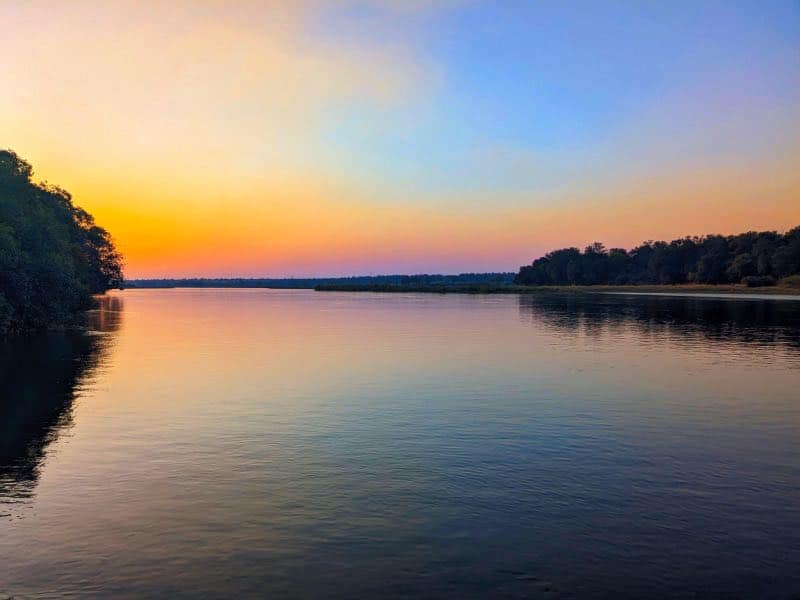
Disclaimer: This post contains affiliate links. This means that if you buy or book anything through them, we’ll earn a small commission at no extra cost to you. This helps us run this website and create comprehensive guides to help you get off the beaten track. We only recommend products and/or services that we use ourselves and trust.


